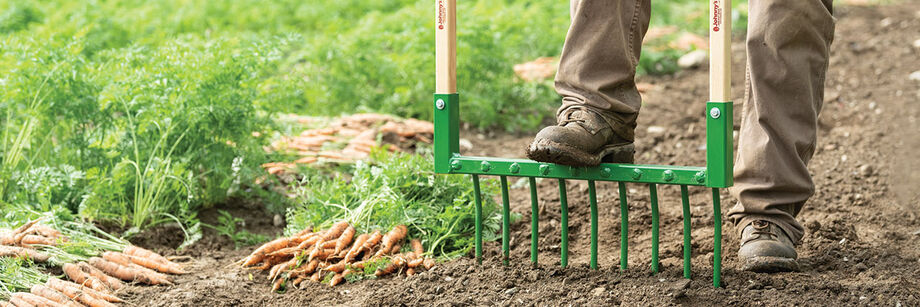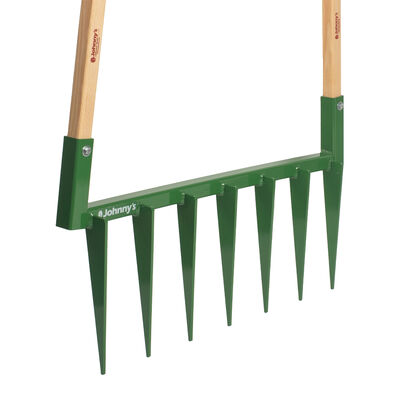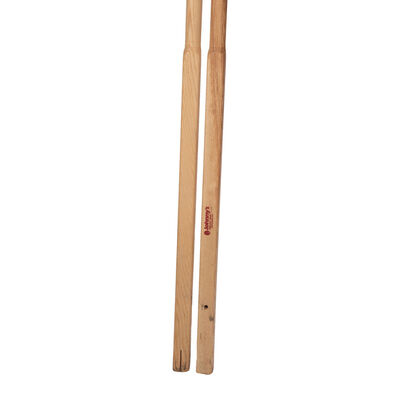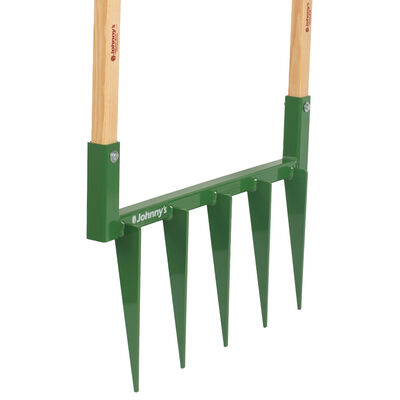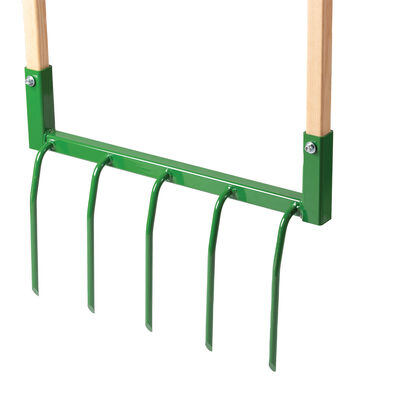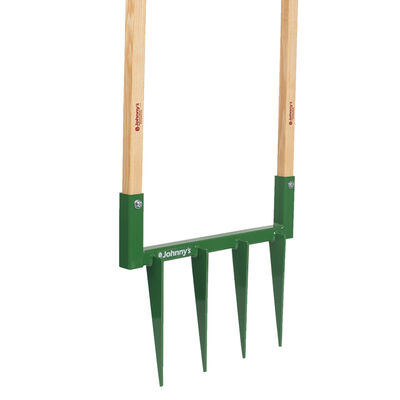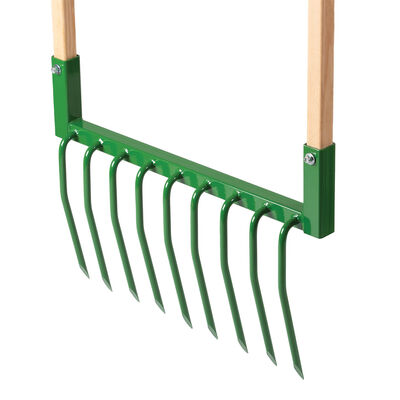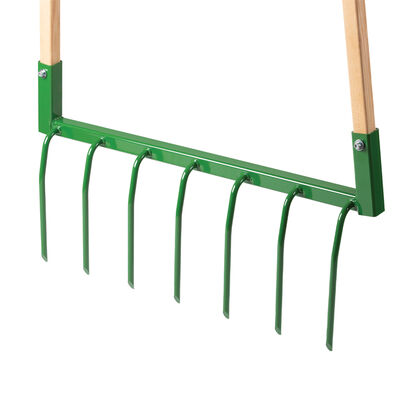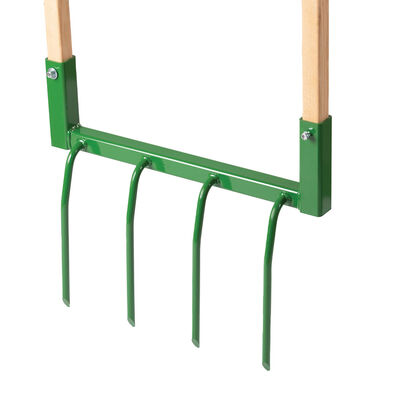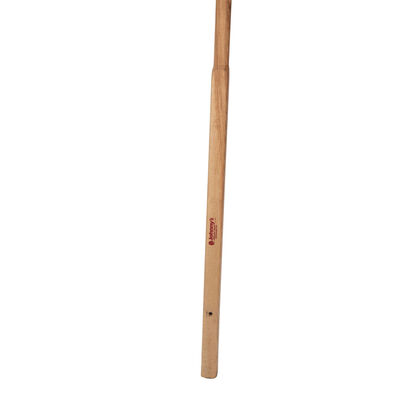Broadforks allow the soil to be deeply aerated without damaging soil structure or mixing of the layers. The effort required is minimized as the body's weight is leveraged to insert and maneuver the tool. We carry a selection of models to choose from: see our Broadfork Applications Comparison Chart for more specifics.
10 Products
Sort By:
Johnny's 727 Hardpan Broadfork
Seven tines. 27" wide. Designed for compacted soil and deep aeration.
Advantages of Using a Broadfork
- Loosens and aerates the soil without damaging soil structure; appropriate for no-till or minimal-till farms and gardens.
- Avoids bringing weed seeds to the surface.
- Leaves beneficial soil bacteria intact.
- Ergonomic design leverages your body weight, saving your back and arms.
Choosing a Broadfork Model
We carry a selection of models to choose from. Our Broadfork Applications Comparison Chart is a helpful reference for comparing models and uses.
- Standard Broadforks: for general use in established beds with standard or loose soils. Designed with parabolic-curved tines to easily lift and aerate the soil with a smooth motion. Available in different widths. We offer steel broadforks as well as a lighter-weight titanium broadfork.
- Hardpan Broadforks: feature heavy-duty ¼" plate steel blades to slice into compacted soils and break up hardpan below the surface. The best choice for rocky soils. Available in different widths. Note: As compacted soils loosen over time, we recommend switching to a standard broadfork for maintenance.
- Harvest Broadfork: designed after the standard models, but with 9 tines spaced closely together, 2" apart, for harvesting root crops in loose or sandy soils.
How to Use a Broadfork
- Drive the broadfork tines down into the soil as deeply as possible by stepping into the toolbar, ideally to the bottom of the tool bar. Note: for standard steel broadforks, the tines should be on the side of the toolbar facing towards you. For the titanium broadfork and the hardpan broadforks, the tines should be on the side of the toolbar opposite the user.
- Use your body weight to pivot the handles towards you as you step backwards off the tool bar. Note: The goal is to shift the soil slightly to create pockets for improved airflow and drainage, not to invert the soil layers, which would dramatically break up the soil structure and bring weed seeds to the surface.
- Advance the tool toward you 10–12" from the last insertion point and repeat down the bed. Work backwards to avoid stepping on the freshly worked area.


